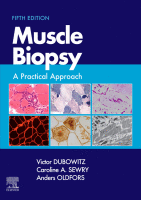Physical Address
304 North Cardinal St.
Dorchester Center, MA 02124

Introduction The congenital myopathies are a clinically, genetically and pathologically heterogeneous group of muscle disorders defined in many patients by the presence of particular histopathological features. They emerged as a group of disorders with the wider application of histochemistry and…

Facioscapulohumeral muscular dystrophy, myotonic muscular dystrophy and oculopharyngeal muscular dystrophy are dominantly inherited disorders, all of which have an unusual molecular defect involving nucleotide repeats. Clinically, facial weakness is a prominent characteristic of all of them. Facioscapulohumeral Muscular Dystrophy Facioscapulohumeral…

Joint contractures are a common complication of several neuromuscular disorders, but in some they are an early feature and specific joints are commonly affected. In particular, disorders known as Emery–Dreifuss muscular dystrophies are characterized by elbow contractures and often associated…

History and Background The term ‘congenital muscular dystrophy’ (CMD) has been widely used to describe a group of infants with weakness and hypotonia from birth or within the first few months of life. Severe, early contractures are common, and most…

History and Background Heterogeneity in the muscular dystrophies has long been recognized ( ). The wide application of molecular techniques and increasing use of next-generation sequencing have identified a growing number of clinical entities, and their gene and protein defects,…

Background Although the advent of molecular genetics has transformed the diagnostic confirmation of Duchenne and Becker muscular dystrophy, we thought it worth retaining some historical background and clinical description of these classical muscular disorders. Duchenne muscular dystrophy (DMD) has been…

There are many inherited and acquired clinical disorders caused by a defect in upper or lower motor neurone or the peripheral nerve. These include amyotrophic lateral sclerosis (ALS; upper and lower motor neurone), hereditary motor and sensory neuropathies (HMSNs; motor…

You’re Reading a Preview Become a Clinical Tree membership for Full access and enjoy Unlimited articles Become membership If you are a member. Log in here

When the pathologist is asked to evaluate a muscle biopsy, much of the interpretation is based on his or her previous experience and the recognition of similarities between the biopsy and muscle from known diseases. In some instances, such as…

Immunohistochemistry Immunohistochemistry has an essential role in the evaluation of muscle biopsies and in examining protein localization. The term ‘protein expression’ is often applied to describe immunohistochemical results, but it should be remembered that the technique only reflects localization of…